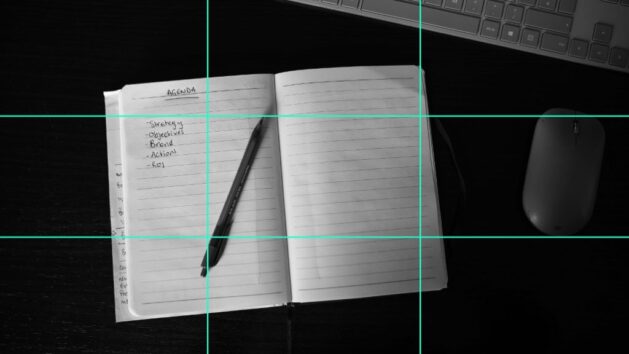How to… create good video
DIY Marketing
These are unsettling times. We find ourselves working remotely, from home, distanced from our usual habits and networks. Not so unusual for the Luma team, but we are definitely feeling the lack of the usual way of doing things.
This has changed how we gather content for articles, video and graphics as well as social media. We are here to help you adapt.
Do you find yourself being asked to create videos for social media, using only the tools you have at home?
We’ve worked with video specialist Marc Grundy at Coolbox to bring you his top 10 tips for creating high quality social media video content… using only your smartphone.
1. Consider your set up.
Take a few minutes to think about what the viewer will see.
- Does the room look tidy?
- Is this a space you want people to associate your business with?
- What are you wearing? Does it reflect how you want to be represented?
- What is sticking out of the top of your head?
2. Landscape.
Use your phone on its side, not upright.
Landscape video is a more widely used format than square or portrait. Plus, it’s far easier to crop content for different uses from landscape than portrait.
3. Use the grid.
The grid on your camera screen (turn it on in the settings) helps you to position your subject well, using the rule of thirds.

Put the camera at eye level – also important for flattering video calls – and focus on the subject’s eyes.
4. Keep it steady.
If you’re going to create videos more than once, invest in some inexpensive equipment to help you capture video and audio content that doesn’t shake, rattle or roll.
Use a tripod. A blue tooth controller will help you press go without disturbing your perfect set up. A lapel mic will capture better quality sound and cut out ambient noise. Even a selfie stick makes a difference.
5. Think about the lighting.
Lighting helps to define your subject and set the mood.
You don’t need a professional set up to create a great looking video. A mix of natural and artificial light, and a little thought, will bring your video to life.
Beware of windows. The natural light they allow in is brilliant but should never be directly behind you.
Pro tip: positioning a lamp at eye level and at 45° to your face is super flattering.
6. Sound is 50% of your impact.
Often overlooked, a viewer is more forgiving of poor sound than of poor visuals.
We highly recommend using a microphone – the one in your smartphone isn’t the best. And sit quietly for a moment to listen to the ambient noises around you. Traffic, wind, the dishwasher, distant radio. Either turn them off or deaden them by surrounding yourself with soft surfaces. Reflective surfaces, such as the kitchen worktop or a tidy desk, will amplify any echoes. Rugs, sofas, cushions, the laundry basket will absorb some of those extras sounds.
Pro tip: hang a towel behind the camera.
And remember, 80% of videos on social media are watched without the sound switched on. Add subtitles using an app such as Headliner or Typito.
7. Plan your content.
Whether it’s a few notes or a script, plan what you want to say. Break it into sections if it’s long.
Think carefully about the length of the video. If it’s a 20 second social media snippet, you should be still and communicate clearly. For a longer piece, use different shots like punctuation: a change of angel works like a paragraph break.
Every video needs an introduction, a clear message and a call to action.
8. Use the best camera you have.
Lucky enough to have a Go Pro or SLK? Use it. Using your smartphone? The forward facing camera is where the technology is; the selfie camera less so.
And clean your lens! A microfibre cloth from under the sink, or your t-shirt. Any soft fabric.
9. Adjust your settings.
Don’t let the camera decide what you’re focusing on. With a little effort you can adjust your settings for far greater impact.
Marc from Coolbox recommends:
- Frame rate: 25fps
- Shutter speed: 1/50
- Resolution: HD. 1080 or higher. 4K will future proof your content and allow you to crop into the video more.
- ISO: 100
- Autofocus: off
- Focal length / zoom: do it yourself, with your feet. Don’t use digital zoom!
10. Use apps for editing
Quick video for social media? Sure, you can just post it. But a little effort will elevate your content above the competition.
A couple of apps on your phone will allow you to add some subtitles and top-and-tail with your branding. Adobe Rush is pretty good.
Need more editing power? Transfer your footage to your computer and edit using iMovie or Windows Movie Maker.
Don’t panic – these tools will do most of the work for you. No specialist knowledge is required.
Finally, publish.
Video content only comes to life when others see it and engage with it. Sometimes, good enough is good enough.
And if you’re not sure, pop it over to us and we’ll give it the once over for you.
Enormous thanks to Marc Grundy from Coolbox for sharing his knowledge with us.
Selected industry experts bring you insight and expert advice, across a range of sectors.
Subscribe for free to receive our fortnightly round-up of property tips and expertise
Selected industry experts bring you insight and expert advice, across a range of sectors.
Subscribe for free to receive our fortnightly round-up of property tips and expertise



